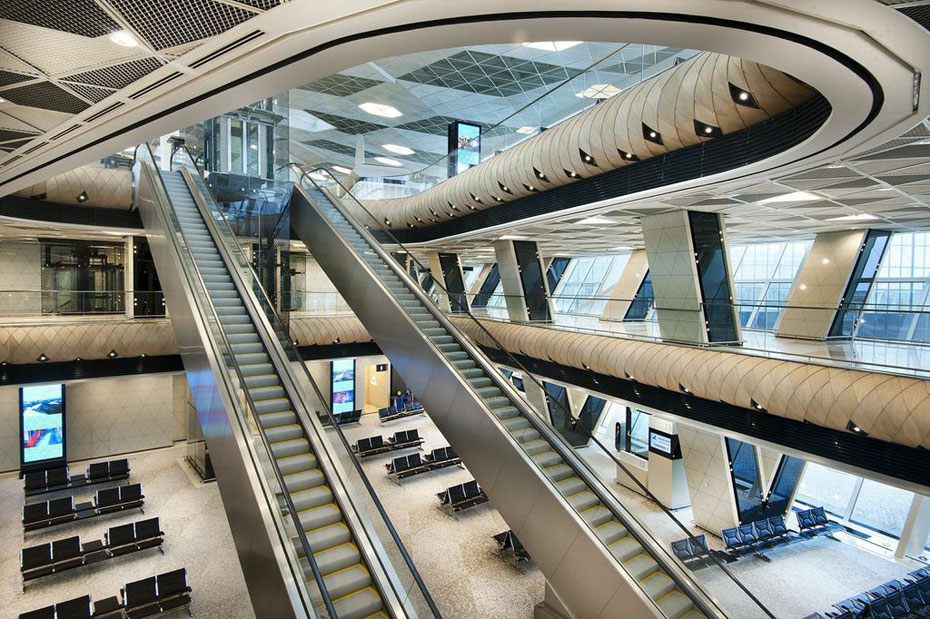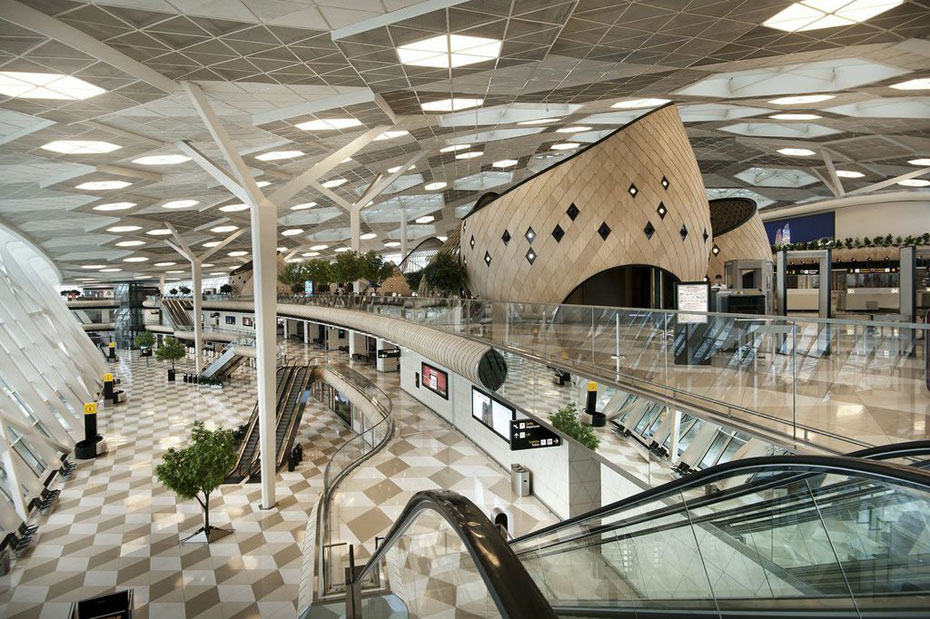Port’s Design Editor Alyn Griffiths travels to Baku via Azal Airline’s Turkish-designed terminal to investigate how the capital is positioning itself as a European cultural hub

From the air, the swooping three-pronged roof of the new terminal at Baku’s Heydar Aliyev Airport is dotted with hexagonal skylights that glitter amid the semi-desert surrounding the Azerbaijani capital. Created by global design and architecture firm Arup, the terminal is part of an oil money-funded building boom in Baku that has seen several of the world’s leading architects employed there to create show-stopping structures, including Zaha Hadid’s award-winning Heydar Aliyev Center and the spectacular Flaming Towers by HOK.
The recent spate of high-profile projects is intended to boost the cultural credentials of a state seeking to capitalise on the attention it received after hosting the Eurovision Song Contest in 2012 and winning the bid to host the first European Olympic Games in 2015. Recognising the importance of creating a good first impression for visitors to the country, Azerbaijan Airlines invited Istanbul design studio Autoban to develop a suitably special interior for its new terminal building.The designers say their only brief was to produce a space that is unlike any other airport in the world, and to provide a premium experience for all passengers. Informed by their negative impressions of other airports, the Autoban team applied natural materials throughout the interior to create a comfortable atmosphere. “We tried to avoid the normal industrial feel of other airports, with metal, granite and cold lighting,” said Autoban partner Sefer Cağlar. “Luxury for us meant using materials like wood, stone and carpet to create a memorable experience.” Details such as textured brushed marble table tops and a Turkish-made carpet with a triangular pattern influenced by the building’s structural shell aid the relaxed and homely feel.
“The cocoon-like structures contain a mixture of eateries, concessions and other facilities. Their scale disrupts the enormous open hall”

Autoban was responsible for all 58,000 square metres of the terminal’s interior, from restyling air conditioning units either side of the main entrance, to designing 20 new furniture types for the lounges. The highlight of the journey from check-in to departures is a cluster of 16 huge wooden pods scattered around a lounge and retail area on the building’s third floor. Made from a complex computer-designed lattice of bent-wood sections, the cocoon-like structures contain a mix of eateries, concessions and other facilities.
On the top floor, business lounges are decked out with a combination of custom-designed furniture and pieces adapted from Autoban’s previous collections. Pairs of armchairs are separated by low tables to give each passenger their own personal space, while the studio’s hooded Nest chairs offer more private resting places. Autoban’s other founding partner Seyhan Özdemir has visited the completed terminal twice now, and says both times she enjoyed exploring the variety of spaces it offers. “We wanted to create a lot of different options for passengers,” she explains. “We hope people will want to fly here and will remember this airport in a good way. That’s our aim.”




